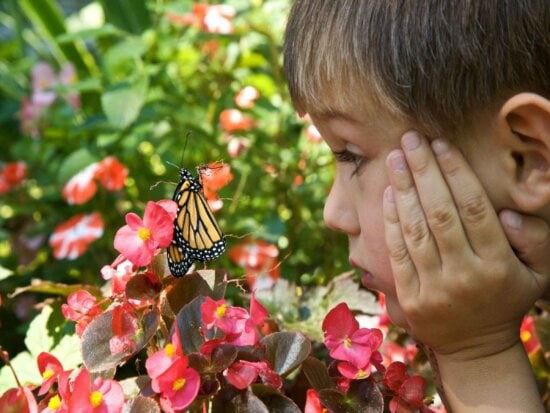Grade Level: 3
Content area: Visual Arts, Life Sciences
Standard identifiers: 2.VA:Re7.1; 3-LS3-2; 3-LS4-3
Objectives: Students will:
- Illustrate how plants and animals interact in the world around them.
- Observe and investigate changes in the local natural environment.
- Identify elements of nature that have possibly adapted over time.
- Research ideas that have formed based on their observations.
Materials and Resources:
- Paper, crayons or markers, pencils, erasers
- MVC’s Learning Module #8: Nature Journal for teacher’s reference
- Nature Journal information and instructions
- Video about adaptations in plants and animals
- Slow narration and clear word to concept illustrations. 6 minutes.
- Video about adaptations in animals
- Has a good and relatable introduction to the concept of adaptation. 8 minutes.
- Video about evolutionary adaptations and climate change
- A little more advanced. May be a good option for follow-up or post-observation.
- MVC’s Learning Module #4: Throwing Shade
- Use this resource to learn more about the adaptations of the coast live oak.
Assessment (informal):
- Students draw an element from the environment around them.
- Students write about their observations, questions they have, and predictions about how the element will change over time due to adaptation.
- Students research their element and see how it has adapted to its environment already, and what other adaptations may take place.
Strategies for English Language Learners and Learners with Special Needs:
- Introduce key words ahead of time, such as adaptation, prediction, survival, and other key words from the video you choose to show.
- Focus on the observation and drawing part of the lesson, rather than the research.
- Spread the lesson out over a couple of sessions.
Instructional Sequence:
Introduction and explanation to students about the purpose of the lesson (15 minutes)
- Ask the students: “Who likes to be outside?” “Who likes to learn?” Say “We can do both! We can learn about nature by spending time outside and paying special attention to what’s around us. We are going to focus on a plant or animal that we think is super interesting and draw what we see. We are going to focus on how that plant or animal behaves or looks to help it survive. Before we go outside, let’s do some learning to prepare for our observations.” Show a video that introduces adaptation (see materials and resources list above).
Teacher modeling (5 minutes)
- Show an example of a nature journal and the instructions using the Nature Journal information and instructions. Then, go outside (don’t forget to have the students bring paper, crayons, markers, etc.) Look around and tell the students something you would focus on. Say you are going to spend time looking at it, drawing it, thinking about how it is able to survive, and writing notes about your thoughts, predictions, questions, and what you want to know more about.
Guided practice (5 minutes)
- Tell the students to explore and find a plant or animal they want to focus on. Walk around and ask the students what their subject of focus is. Make sure they understand to focus on something specific.
Practice (independent) (20 minutes)
- Students spend time independently drawing and writing in their nature journals. (You might want to do part of the activity inside where you can write prompts on the board, such as: What did you see? How do you think the plant or animal will change in the future? What questions do you have or what do you want to know more about?)
- Then, have students research the element they observed in a school or public library, or on the internet with adult supervision. Have them focus on how that element has changed, what aspects make it adaptable to the region (what makes it able to survive through change), and any other questions they thought of during the observation. Have the students write notes on the information they find.
Closure (15 minutes)
- Have students share their nature journal and research in small groups.
Monitoring for student learning/understanding:
- Check that students understand what the plant or animal needs to survive and the characteristics they are focusing on relate to their survival.
Take reflection notes on how the lesson went for your future reference.


